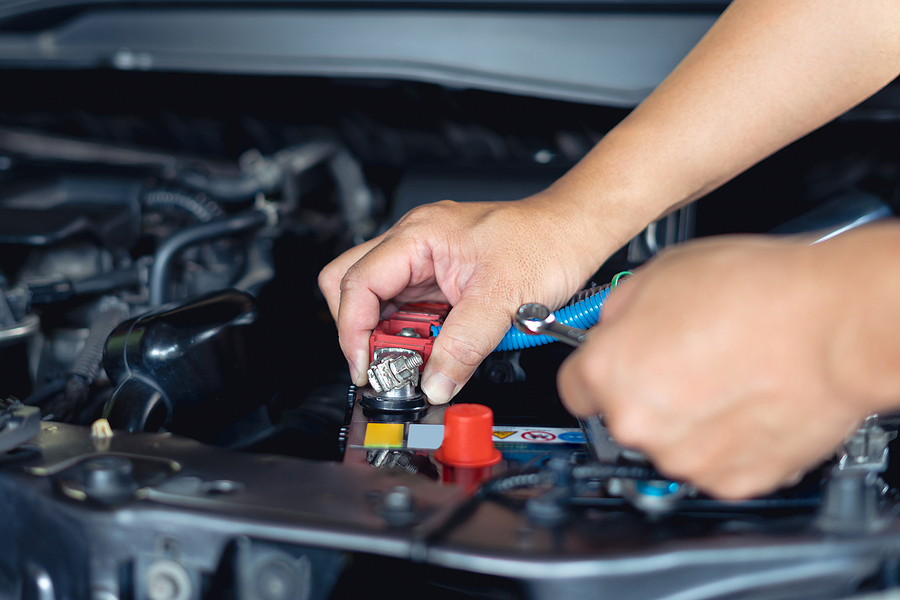Choosing the right automotive battery is crucial for ensuring your vehicle’s optimal performance. A good battery not only provides power to your car’s electrical components but also ensures that the engine starts smoothly, no matter the weather conditions. If you’re not careful, selecting the wrong battery could lead to frequent replacements or even leave you stranded in the middle of the road. Additionally, understanding the importance of a reliable mobile power battery can further enhance your vehicle’s capabilities, especially for those who rely on electrical devices during travel. In this guide, we’ll dive deep into everything you need to know about selecting a high-quality automotive battery that suits your vehicle’s needs.
What Is an Automotive Battery and Why Is It Important?
At its core, an automotive battery stores electrical energy and releases it when your car requires power. The battery is responsible for starting the engine, powering the lights, and keeping other electrical systems running. Without a reliable automotive battery, your car wouldn’t function. However, not all batteries are the same, and choosing one that’s tailored to your vehicle is essential for efficiency and longevity.
Key Factors to Consider When Selecting an Automotive Battery
1. Battery Size and Compatibility
Not all automotive batteries are the same size, so it’s essential to find one that fits your car’s battery tray. Your vehicle’s manual will specify the recommended battery size. The right fit ensures the battery remains secure and operates efficiently. Choosing an incompatible size could result in installation problems or, worse, a malfunction.
2. Cold Cranking Amps (CCA)
Cold Cranking Amps measure a battery’s ability to start the engine in cold temperatures. This is crucial, especially if you live in regions that experience harsh winters. The higher the CCA rating, the better the battery will perform in colder conditions. When choosing an automotive battery, ensure it has the appropriate CCA rating for your car’s make and model.
3. Battery Reserve Capacity (RC)
The Reserve Capacity is the amount of time the battery can provide power to the vehicle if the alternator fails. A battery with a higher RC will ensure your vehicle continues to run for longer in case of a system malfunction. Always check your vehicle manual for the recommended RC to make sure your chosen automotive battery meets the requirements.
Types of Automotive Batteries and Their Features
1. Lead-Acid Batteries
Lead-acid batteries are the most common type used in vehicles today. They are reliable, affordable, and have been around for many years. There are two types of lead-acid batteries:
- Flooded Lead-Acid: These batteries require regular maintenance to top off the water level. They are budget-friendly but tend to have a shorter lifespan.
- Sealed Lead-Acid: Also known as maintenance-free batteries, sealed lead-acid batteries are easier to use as they don’t require water level checks.
2. Absorbed Glass Mat (AGM) Batteries
AGM batteries are more advanced and perform better than traditional lead-acid batteries. They are designed to handle electrical demands better, making them suitable for modern vehicles equipped with advanced electronics. AGM batteries have a longer lifespan, are vibration-resistant, and charge faster.
3. Lithium-Ion Batteries
Though less common in everyday vehicles, lithium-ion batteries are becoming increasingly popular, especially in electric and hybrid cars. They are lightweight, have a long life, and charge more quickly. However, they are considerably more expensive than lead-acid or AGM batteries.
Understanding Automotive Battery Ratings
When you buy an automotive battery, several ratings determine its quality and performance. These include:
- Amp Hour (Ah) Rating: Measures the energy a battery can store and deliver over time.
- Voltage: Most automotive batteries are 12-volt. However, the voltage must be compatible with your car’s electrical system.
- Cycle Life: Indicates how many times a battery can be charged and discharged before it loses its capacity.
How to Maintain Your Automotive Battery for Longevity
Proper maintenance can extend your automotive battery’s life significantly. Here are some maintenance tips:
- Keep the Battery Clean: Dirt and corrosion on the terminals can affect the battery’s performance. Cleaning the terminals regularly will ensure a solid connection.
- Check the Electrolyte Levels: For flooded lead-acid batteries, checking and maintaining the electrolyte levels is essential. If the level drops too low, it could damage the battery.
- Avoid Short Trips: Constant short trips don’t allow the battery to recharge fully. Taking your vehicle on longer drives helps recharge the battery fully and prevent it from draining.
Signs You Need a New Automotive Battery
Over time, even the best automotive battery will wear out. Here are signs that indicate it’s time for a replacement:
- Slow Engine Crank: If it takes longer than usual for the engine to start, it’s a sign that the battery is losing power.
- Dim Headlights: A weak battery will struggle to power the lights, causing them to appear dim.
- Dashboard Warning Light: Most modern vehicles have a dashboard light that alerts you when the battery needs checking.
- Swollen Battery Case: Extreme heat can cause the battery case to swell. If this happens, the battery is no longer usable and should be replaced.
Frequently Asked Questions
1. How long does an automotive battery last?
Typically, an automotive battery lasts between 3 to 5 years. However, the lifespan can vary based on driving habits, weather conditions, and maintenance.
2. What should I do if my automotive battery dies?
If your battery dies, you can jump-start it using jumper cables and another vehicle. If it continues to fail, it’s best to replace the battery.
3. Can I use any automotive battery for my car?
No, not all batteries are compatible with every car. It’s essential to check your vehicle’s manual to find the correct battery size and type.
4. How can I extend my automotive battery’s life?
Regular maintenance, such as cleaning the terminals and avoiding extreme temperatures, can extend the battery’s life. Driving longer distances also helps keep the battery charged.
5. What is the best automotive battery for cold climates?
A battery with a high Cold Cranking Amps (CCA) rating is ideal for cold climates, as it can start the engine in freezing temperatures.
Conclusion
Choosing the right automotive battery can significantly impact your vehicle’s performance and reliability. By considering factors like size, Cold Cranking Amps, Reserve Capacity, and battery type, you can ensure that your vehicle runs smoothly, even in challenging conditions. Regular maintenance and understanding the signs of a failing battery will help you avoid being stranded with a dead battery.










